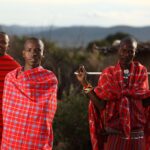Africa, the world’s second-largest continent, is a melting pot of diverse cultures, traditions, and languages. With over 2,000 languages spoken across its 54 countries, Africa exhibits a rich linguistic tapestry. These languages not only reflect the continent’s historical, ethnic, and cultural diversity but also play a crucial role in shaping its social, political, and economic landscapes. In this article, we explore the top 10 most spoken languages in Africa, highlighting their significance and influence.
- Swahili: With approximately 150 million speakers, Swahili holds the position of the most widely spoken language in Africa. It serves as the lingua franca for several East African countries, including Tanzania, Kenya, Uganda, and the Democratic Republic of the Congo. Swahili’s influence extends beyond Africa, as it is also recognized as an official language of the African Union and the East African Community.
- Hausa: Hausa, spoken by around 90 million people, primarily dominates the West African region, particularly in Nigeria, Niger, and Ghana. As a Chadic language, Hausa is known for its literary traditions, music, and vibrant cultural heritage. Its widespread usage is attributed to its status as a trade language and its popularity in media, including radio, television, and films.
- Yoruba: Yoruba, with approximately 30 million speakers, is prominently spoken in Nigeria, Benin, and Togo. It boasts a rich cultural heritage, folklore, and vibrant artistic expressions. Yoruba has gained recognition globally through the influence of Afrobeat music and Nollywood films, showcasing its significance as a language of cultural expression.
- Amharic: Amharic, the official language of Ethiopia, boasts around 25 million speakers. It holds immense cultural and historical significance as the language of the Ethiopian Orthodox Church and the country’s administrative and educational institutions. Amharic’s influence stretches beyond Ethiopia, as it is also spoken by Ethiopian diaspora communities worldwide.
- Oromo: Oromo, spoken by approximately 25 million people, is the most widely spoken Cushitic language in Africa. It is primarily spoken in Ethiopia, Kenya, and parts of Somalia. Oromo has gained prominence in recent years due to the political and cultural revitalization efforts of the Oromo people, highlighting the language’s importance as a symbol of identity and resistance.
- Igbo: Igbo, spoken by around 20 million people, is a major language in Nigeria, particularly in the southeastern region. It possesses a vibrant literary tradition and cultural heritage, and it has produced renowned writers and intellectuals. Igbo’s influence extends globally through the Nigerian diaspora and the genre of Igbo highlife music.
- Somali: Somali, with approximately 16 million speakers, is the official language of Somalia. It also holds significance in neighboring countries such as Djibouti, Ethiopia, and Kenya, where Somali-speaking communities reside. Somali’s influence is notably reflected in its rich oral literature, poetry, and its role as a language of commerce in the region.
- Berber: Berber languages collectively represent a group of closely related Afro-Asiatic languages spoken by approximately 15 million people in North Africa, particularly in Morocco, Algeria, Tunisia, Libya, and Egypt. These languages play a crucial role in preserving the cultural heritage of the indigenous Amazigh populations and are gradually gaining recognition and official status in some countries.
- Zulu: Zulu, spoken by around 10 million people, is the most widely spoken language in South Africa. It is known for its distinctive click sounds and has gained recognition through the works of prominent writers and musicians. Zulu’s cultural significanceis further highlighted by its role as one of the 11 official languages of South Africa.
- Tigrinya: Tigrinya, with approximately 9 million speakers, is the most widely spoken language in Eritrea and one of the main languages in Ethiopia. It holds historical and cultural importance and serves as a symbol of identity for the Tigrinya people. Tigrinya’s influence can be seen in its literature, music, and religious texts.
Africa’s linguistic landscape is incredibly diverse, with thousands of languages spoken across the continent. The top 10 most spoken languages in Africa, including Swahili, Hausa, Yoruba, Amharic, Oromo, Igbo, Somali, Berber, Zulu, and Tigrinya, represent a rich tapestry of cultures, traditions, and identities. These languages play a crucial role in communication, education, cultural expression, and regional integration. Understanding and appreciating the linguistic diversity of Africa contribute to a deeper understanding of its people, their histories, and their aspirations for the future.



